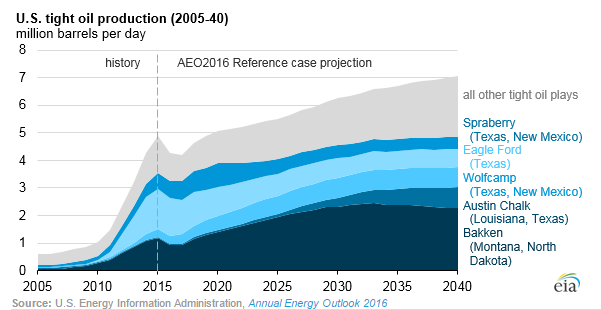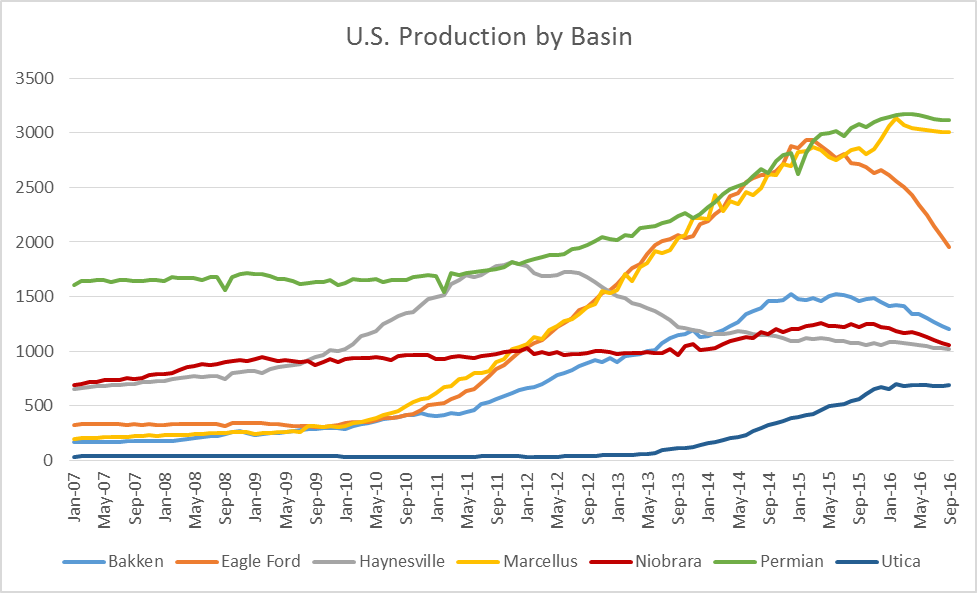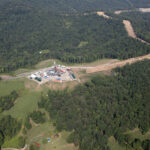Permian, Marcellus Lead U.S., while Eagle Ford Dives Hard
As cost structures are held in check and oil price fluctuations are seemingly without end, producers are evaluating acreage positions and determining what are the best assets.
As covered by Oil & Gas 360®, the Permian basin has been the hot bed of activity recently. With IRRs and breakeven costs in the Permian being some of the best in the industry, companies are snapping up acreage in the play at a rapid rate.
Another visible data point is the level of total production in the U.S.
Industry followers for the past almost two years have been focused on weekly storage reports, levels of production, and the level of refinery storage.
The EIA compiles oil and gas production numbers by basin, and the chart below shows data from the seven most prolific basins in the U.S. With the exception of the Haynesville, production remained largely flat until 2011 to 2012.
The two basins with the largest growth over the last few years have been the Marcellus and the Eagle Ford. Since July 2009, production has grown in the Marcellus by 1053% from 261.5 MBoe/d to 3,020.1 Mboe/d in July 2016. In the Eagle Ford, production has increased 593% over the same time period, rising from 309.6 MBoe/d to 2,144 MBoe/d.
But production in the Eagle Ford has fallen dramatically in the last year, 23% since last July. The Marcellus and the Permian have held strong over the last year, with slight production increases despite the depletion of oil prices.
The Permian Basin was responsible for the largest chunk of U.S. production before the shale boom brought several other basins to the forefront.
The Marcellus and the Permian are currently the two largest basins by production, with the Permian edging out the Marcellus by a hair. One of the reasons both basins are continuing to produce at high levels is the favorable well economics in the basin.
According to KLR Group, breakeven prices are lower in the Permian and Marcellus than in other plays. “Predicated on company capital performance, the breakeven cost of U.S. oil supply is bracketed by the Midland Basin Wolfcamp/Lower Spraberry (~$48) and Williston Basin Bakken/TFS (~$64). The breakeven cost of U.S. natural gas supply is bracketed by the southwest Marcellus (~$3.15) and Fayetteville (~$3.75),” KLR said in a note today.
In a period of capital constraints, it would make sense to allocate resources to the areas generating the highest return, in this case the Permian Basin and the Marcellus.
Bust follows Boom
In the basins with less favorable economics, the downturn has taken its toll on employment. According to Manufacturers News Inc., manufacturing jobs have been declining in North Dakota. “The oil and gas extraction sector has led North Dakota’s post-recession job gains, with jobs skyrocketing 250% between 2010 and 2014, but the industry’s employment declined for the first time in a near decade, falling 23% over the past twelve months. The oil/gas extraction sector ranks second in North Dakota for industrial employment, employing 6,952.”
The boom in jobs would correlate closely with the increase in production coming from the Bakken. As the oil price has depleted, so too has the production level. Production levels in the Bakken have decreased by 16.6%, tracked by the 23% decrease in state manufacturing employment.
Oil and Gas Projections
The recent declines in oil and gas in some basins can be largely attributed to the decline in commodity prices. As prices begin to rise again, where will the upswing in production come from? EIA believes that the increase will likely come from tight oil plays.
The EIA said, “Production from tight oil in 2015 was 4.89 million barrels per day, or 52% of total U.S. crude oil production. From 2015 to 2017, tight oil production is projected to decrease by 700,000 barrels per day in the Reference case, mainly attributed to low oil prices and the resulting cuts in investment. However, production declines will continue to be mitigated by reductions in cost and improvements in drilling techniques. The use of more efficient hydraulic fracturing techniques and the application of multiwell-pad drilling, as well as changes in well completion designs, will allow producers to recover greater volumes from a single well.”

Bakken returns to the throne by 2019: EIA
“As oil prices recover, oil production from tight formations is expected to increase,” the agency reported. “By 2019, Bakken oil production is projected to reach 1.3 million b/d, surpassing the Eagle Ford to become the largest tight oil-producing formation in the United States. The Bakken, which spans 37,000 square miles in North Dakota and Montana, has a technically recoverable resource of 23 billion barrels of tight oil that can be produced based on current technology, industry practice, and geologic knowledge. Bakken production is projected to reach 2.3 million barrels per day by 2040, almost a third of the projected U.S. total tight oil production.”
The increase coming from tight oil plays highlights the influence of hydraulic fracturing and technological improvements. The initial learning curve for hydraulic fracturing seems to be surmounted and the innovations coming from the oil field are rapidly improving.
The fair assumption is that innovation will continue to improve the drilling efforts in the U.S. and continued reductions in drilling and completion days combined with technology enhancements will lead to better well economics in the tight oil plays.
In his recent conference presentation about the Bakken and the evolution of completion technologies in the Williston basin, Mark Williams, EVP drilling and development for Whiting Petroleum—2014’s largest Bakken producer, said, “The advance of technology is what this is really all about. If you had told me ten years ago that we’d be drilling 7,000 foot deep wells with 7,500 foot long laterals in four days, I wouldn’t have believed it.”








